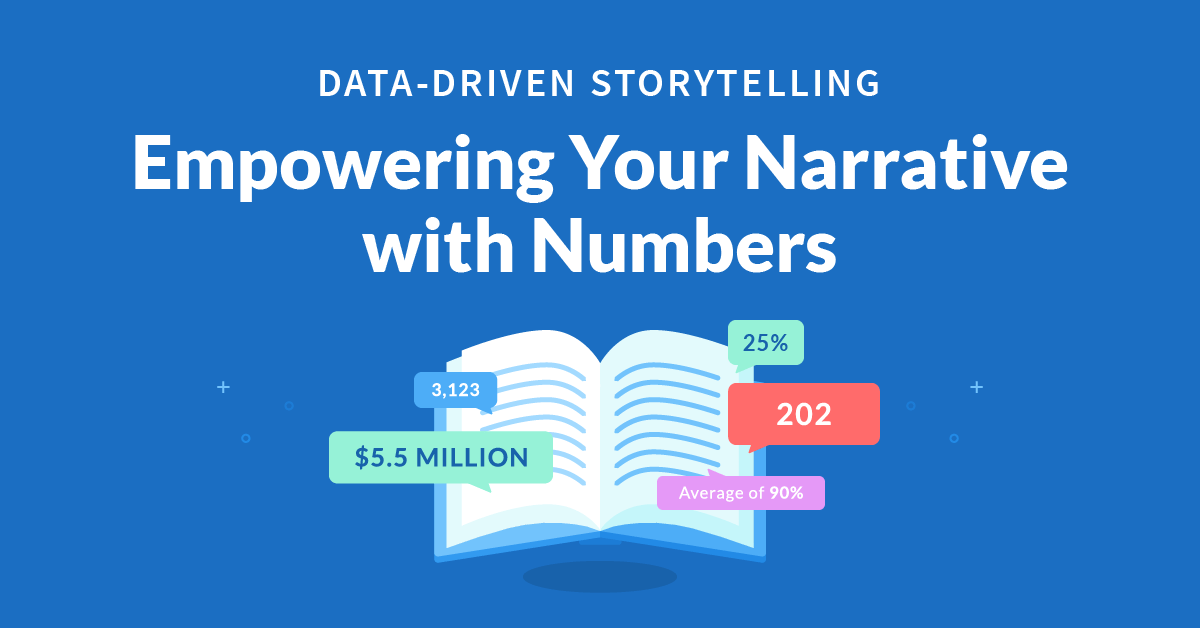Data-Driven Storytelling: Empowering Your Narrative with Numbers

What is Data-driven Storytelling?
Data-driven Storytelling takes the conventional content marketing practice of storytelling — enlivening an organization’s brand through narrative — to the next level by incorporating metrics. By using data within stories, nonprofits can both deeply engage with their target audience to form a personal connection and empower them with the information they need to make an informed decision. This is particularly effective when persuading potential donors or activists to become involved.
Stories have always been powerful drivers of human behavior. We are compelled by the characters, situations, and outcomes. Imagine your supporters feeling as invested in your cause as you felt about the protagonist of your favorite book or film. This is what nonprofit supporters are looking for in your communication with them; in fact, OneSpot.com reports that 92% of consumers want brands to make ads that feel like a story.
Nonprofits can use storytelling to effectively convey their mission and call-to-action. However, simply telling a story is not always enough. Here’s why it’s important to add data to your storytelling, and how it can help your organization stand out:
Why should you use data with storytelling?
Data is quantitative information that reveals facts, statistics, and other key metrics. When combined with qualitative information like storytelling, it becomes a powerful tool. From building online fundraising messages to giving a speech at an event, using storytelling to communicate these metrics helps your audience retain the information as they feel your story — understanding how their specific action has a significant impact to the cause.
How do you use data with storytelling?
Metrics collected from reports are more than just numbers— when used correctly, they’re key insights into understanding our surroundings. However, in a world of seemingly infinite numbers, technological barriers and human limitation can sometimes make the process difficult. Before you begin, you’ll want to be sure that you can effectively collect and communicate about data.
Collecting the data
Your organization might already have a CRM in place, but is it the most effective for your needs? Effectively collecting data is necessary for grounding both your storytelling and your program. Make sure that you have the technology solutions you need to collect all of the data points you need to track, and easily pull this information into a digestible report.
From targeted email efforts to online fundraising, social network tracking, and more, EveryAction can help you harness data reports to enhance your story and engage your audience to taking the next step. To learn more about EveryAction Development, sign up here and get a demo today!
Communicating the data
Communicating effectively about quantitative information is often easier said than done – especially when working with large data sets that can easily overwhelm a reader. Simply including the factual data and statistical information in a report can be informative, but it’s scientifically proven that incorporating visuals are processed 60,000 faster than text. Infographics can communicate large amounts of information quickly and clearly, giving us visual context and comparison to understand the meaning of the numbers we’re looking at. However, even a visual alone may not be enough; a study reported in Forbes revealed a story-based brochure outperformed an infographic version by $2.38 to $1.14 in terms of participant donations.
What does that mean for you? Visuals, such as infographics, charts, graphs, and videos definitely help by allowing the audience to process information faster. However, without narrative context, it’s just information. Providing the narrative context allows us to emotionally connect to content, and as a result, we retain more of the information.
Read More: Making data-driven decisions
Cultivating and harvesting data will only benefit you and your organization fully when you also use it to inform future decisions. It measures the success of your goals, but it also provides you with a deeper understanding of the effectiveness of your mission, product, and/or brand. Check out our report to see how other nonprofits are using data.


